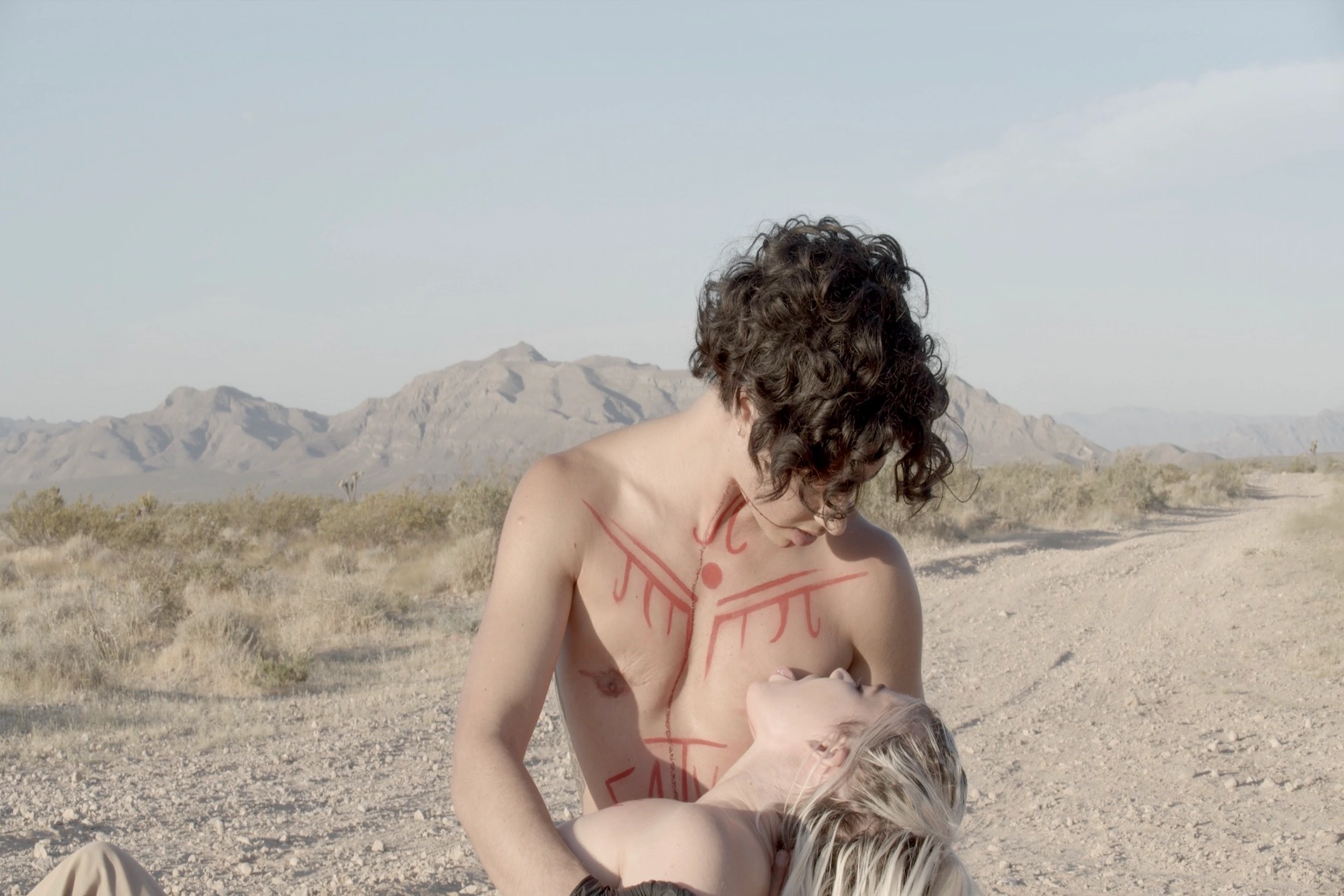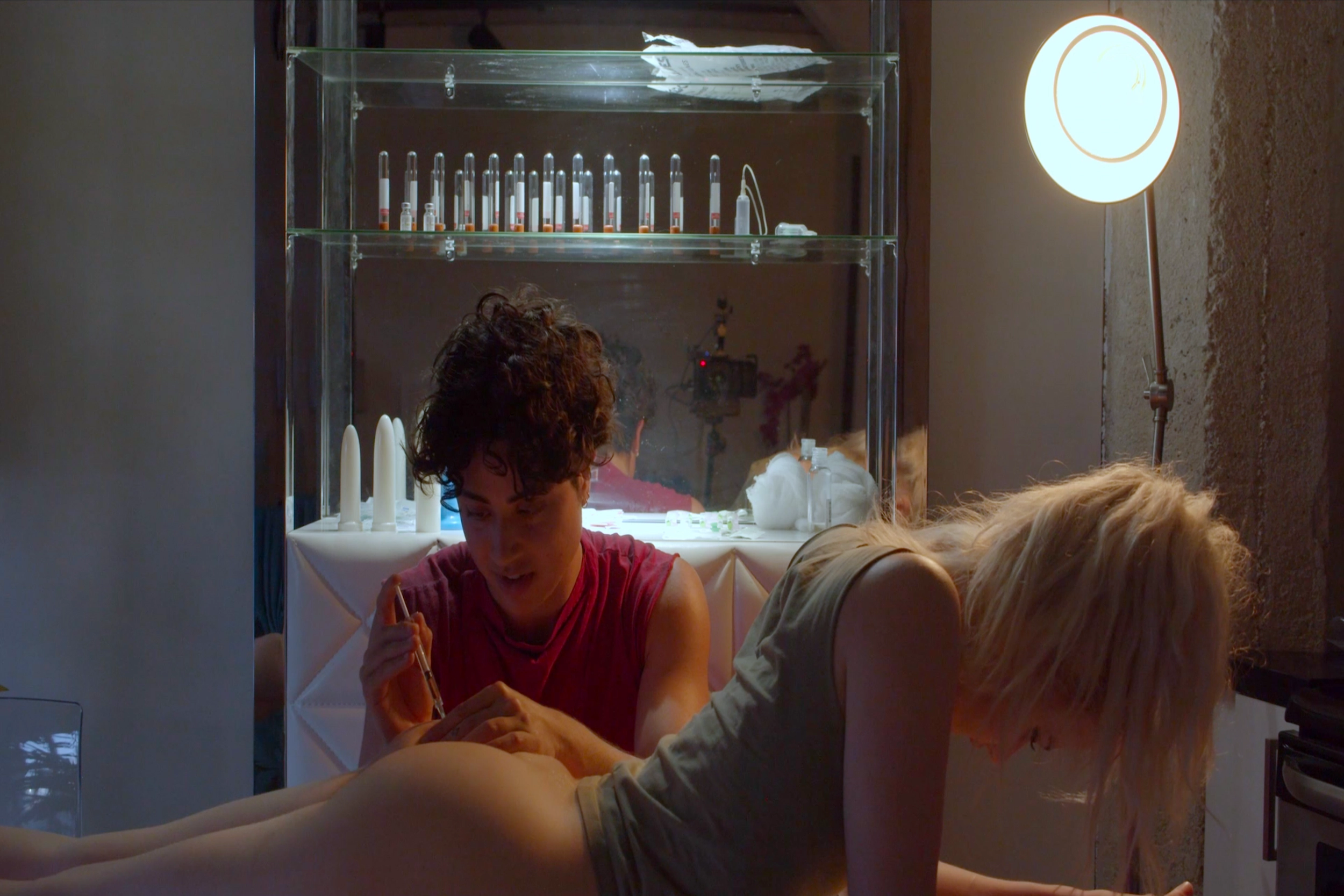With
Samira Elagoz, Cade Moga
Filmed during the Covid-19 pandemic, Seek Bromance tells the story of Samira Elagoz and Cade Moga, and their joint attempt to defy gender norms. It all begins when the two artists meet to collaborate and share their common desire to transition. Then the pandemic hits. With the world at a standstill, Sam and Cade are swept away by a passionate impulse and give in to their desire for each other. They decide to hit the road. Against the backdrop of the pandemic and as a witness to this budding romance, Elagoz's camera follows the impromptu road trip, capturing this dazzling love story between two bodies discovering and transforming themselves under the influence of hormones.
Cast
distribution
Something Great
production
SPRING Performing Arts Festival
coproduction
Frascati, KWP Kunstenwerkplaats, Black Box Teater, BIT Teatergarasjen, Finnish Cultural Institute Benelux, Arsenic
with the support of the Performing Arts Fund, Koneen Koneen Säätiö, Prins Bernhard Cultuurfonds, Ammodo
Five dates
2013 The first time I held a camera, everything changed. Coming from a technical background in dance and having observed many “talented artists”, I grew tired of them, and of the idea of training people to become what I wanted them to be. I preferred to choose people, allow them to be themselves, and capture them, through my relationship with them. Then I met this guy, “the Ukrainian” on the Internet. I went to his place and stayed there for two nights. We filmed our encounter. The images were raw, dangerous and very hot. I'd never felt such adrenaline. That encounter was the starting point for everything I've done since: meeting strangers and filming our encounters.
2015 I went to a retrospective of a famous cisgender photographer in New York. As I walked through the exhibition, I kept thinking what a shame it was that, over the course of his life, he had met so many women and yet photographed them all in the same way. I remember deciding at the time: when I have my retrospective, people will be able to see the life I lived with my subjects/collaborators.
2020 The year I began my transition and my Seek Bromance project was born. Before Covid, I had spent four years touring internationally with my work on my rape and my life as a woman. The pandemic put an abrupt end to that time. I started hormone treatment at the beginning of the confinement. I had just landed in Los Angeles to work with my collaborator. We spent most of Covid's first months in the desert, far from civilization. It felt like we were close to the end of the world. As if we were the last two people left on a planet from which all life had disappeared. In this context, we couldn't be infected by the world, but only by each other. During the editing process, a friend pointed out to me that it sounded like a trans allegory: the desert as the departure of the imagination, the body as a world about to be rewritten.
2022 The Silver Lion at the Venice Biennale. This was a landmark moment in my career, an immense recognition of a body of work that has often evolved at the frontier of what the art world is prepared to see. My practice tackles subjects that are still rarely discussed, such as the impact of rape on sexuality, or transmasculinity presented outside conformist narratives. To be recognized in such a historically conservative context is not only a personal achievement, but also a profound cultural shift. Living in a time when transgender works can be recognized in this way is an indispensable step forward.
2022 I've fallen in love several times in front of the camera. My work has always been a collection of love and life stories. But falling in love with my collaborator, photographer Z Walsh, was different. We met in Berlin, when Z came to Europe. We spent seven hours in a bar, sharing a whisky Sour and talking non-stop until we kissed. It was the first time I'd met someone I was interested in, and I thought, “Maybe I shouldn't film this one.” Maybe it was time to meet someone off-camera. But then Z started taking pictures of me.
It was the first time I'd worked with someone who wanted to film me as much as I wanted to film him. It turned out to be the shortest project ever made, but also one of the most moving.




